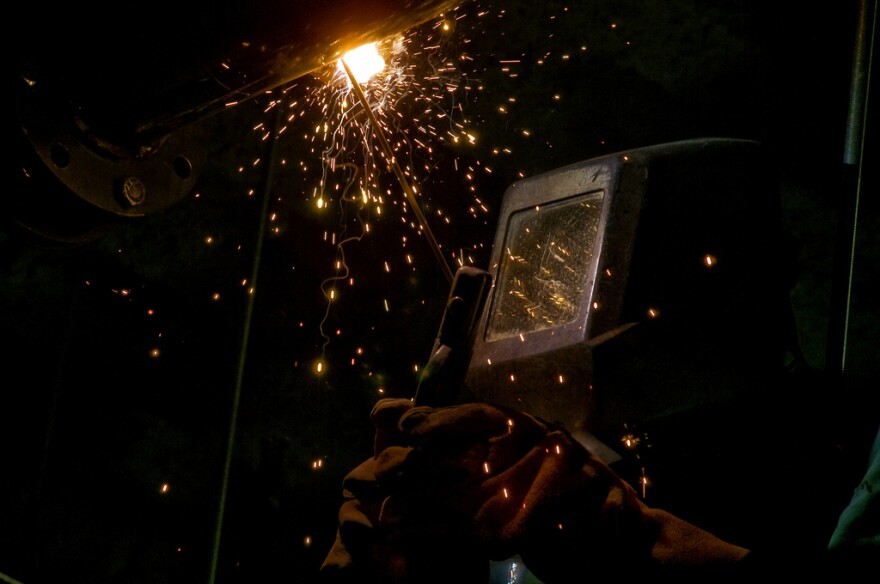The construction of a new crude oil pipeline from North Dakota to southern Illinois is expected to create as many as 12,000 construction jobs. A majority of those jobs are expected to go to union workers, which has local labor eager to get to work.
Ryan Drew has been following the progress of the proposed Dakota Access pipeline - a project of Energy Transfer Crude Oil Company, LLC, a Texas based company.
Drew, Business Representative with the International Union of Operating Engineers, Local 150, and the President of the Southeast Iowa Building and Construction Trades Council, attended several public hearings in southeast Iowa late last year.
"Typically on a pipeline project, probably the most work is obviously... the heavy equipment operators,” he said. “They go in and clear the right of way [and] prepare the ditch for the pipe to go in."

He said next come the welders, who make the connections in the pipe and prepare it to go in the ground. Then, come the laborers, assisting everyone and making sure the ditches are ready to go. And the teamsters are responsible for bringing the material in and out of the job site.
At this point, Drew's members will likely be able to land these jobs. Vicki Grando, spokeswoman for Dakota Access, said the company wants to have highly-trained, well-skilled employees working along the entire route.
"We have committed to the unions that at least 50% of the workers will be union workers and they will be sourced through the local union halls," Granado said.
Ryan Drew is confident that will happen because he said the company has talked about utilizing a Project Labor Agreement in Iowa and Illinois.
"That's the assurance that we are looking for,” Drew said. “That's the mechanism that gets local workers from our local union hall out on these projects."
Drew said based on past practice, the PLA would require the company to come to the area and list the specific skills needed. He said the local labor halls would then refer workers to the company.
Opponents of the project raised questions during last year’s planning meetings and public meetings in Iowa as to whether local workers are even capable of doing the work.
Drew said that could not be farther from the truth.
"I have several of my members who live in Burlington and travel to do pipeline work all over, so that's false,” he said. “And... that's what every one of our training sites is for. We have a three-week classroom at our training site that we put on for operator qualifications."

Drew said local workers also maintain similar pipelines in the region.
"Just because this may be something new to this region, this work on these pipelines, the maintenance work, is done almost every day," he said.
Vicki Granado, with Dakota Access, said another misconception is that there will be just one crew building the entire eleven-hundred-plus mile route. She said more workers will be needed to meet the deadline of having the pipeline operational by late 2016.
"In most cases, when you have a construction project of this size, there will be multiple contractors,” she said. “So there will be 'spreads.' There will be multiple crews working on each spread at any given time."
Ryan Drew said most of the details about the construction timeline and structure will not be revealed to local union workers until after the permitting phase is completed by the Iowa Utilities Board and the Illinois Commerce Commission.
"Once it gets through the permitting stage and they meet the criteria they need to build this, then that is when we will be able to start talking more about this project,” Drew said.









